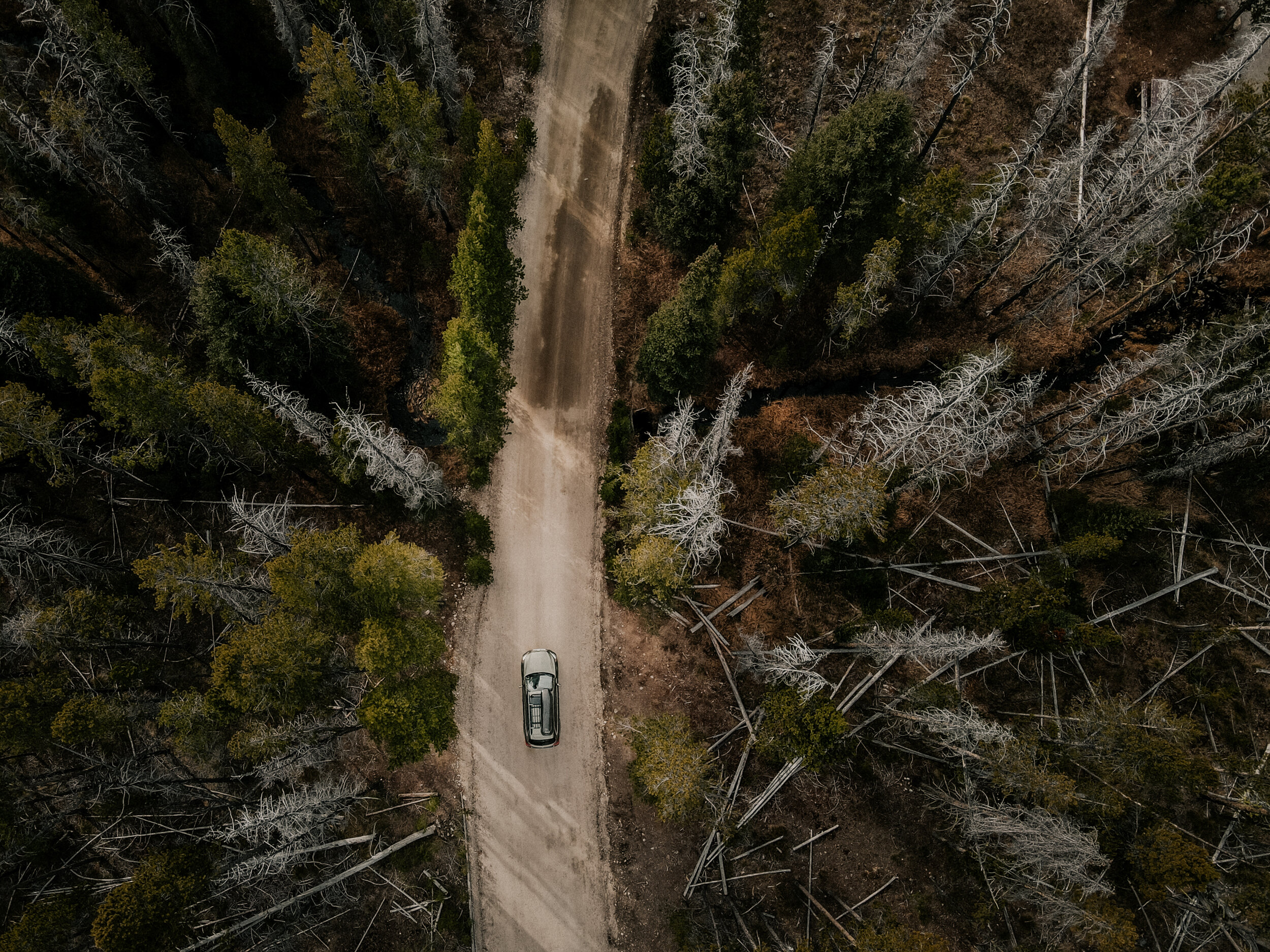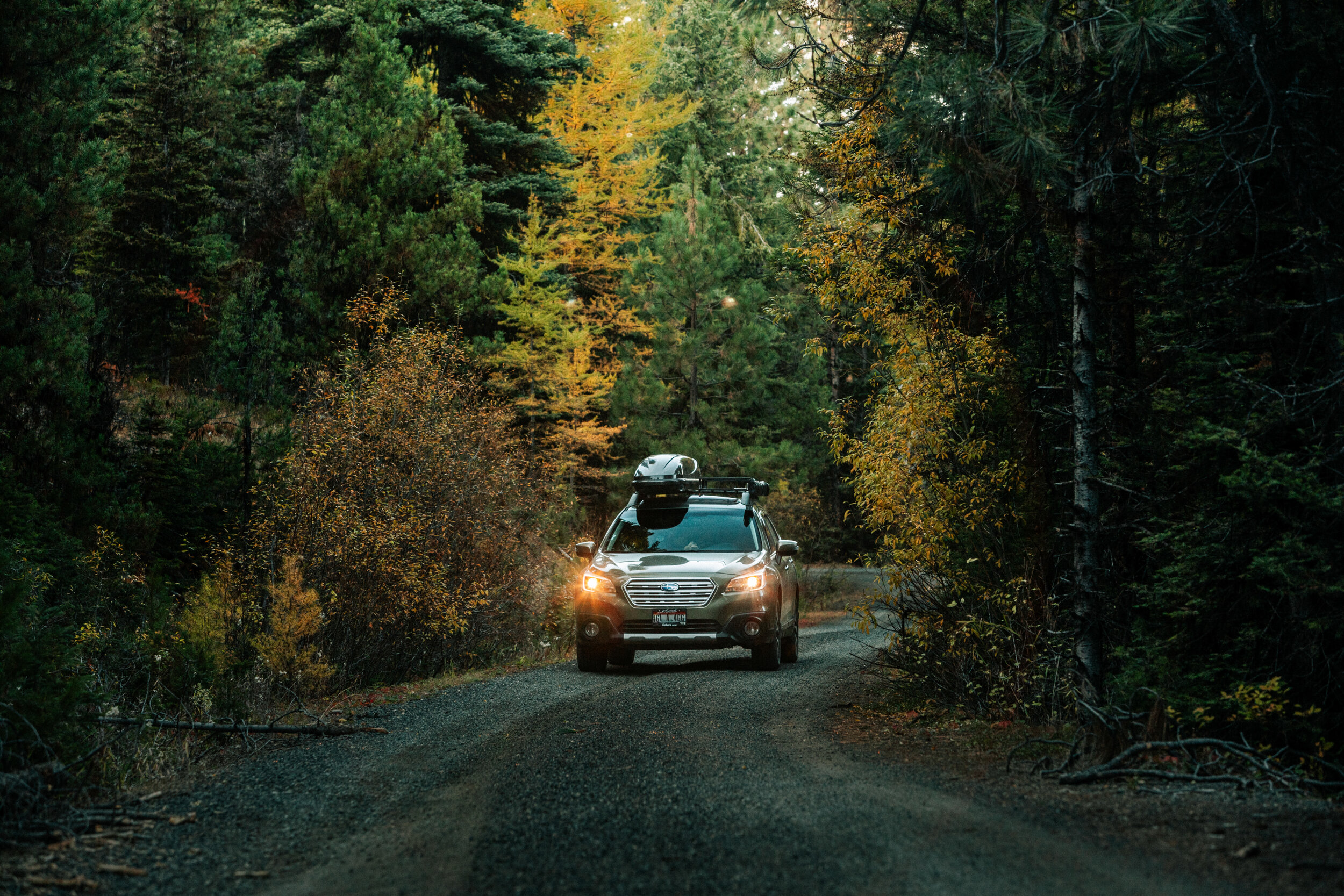Choose The Best Tires For Your AWD Subaru
Choosing tires for your AWD car can be a daunting task with the hundreds of options out there. How can you pick the right one that won't leave you stranded or stuck all while maintaining the efficiency of the car you drive? It’s not an easy choice to get right when new to analyzing tire options, but here’s a few tips that should point you in the right direction and keep you moving towards your destination.
I recently needed a new set of tires to put on my 2016 Subaru Outback and went through this process myself. I spend a lot of time on pavement, but I also put a few thousand miles a year on gravel and dirt roads as well as plenty of snowy and icy road driving while going camping, skiing, backpacking ect. I wound up leaning towards All-Terrain tires as they best fit my needs, and here’s how I arrived at my conclusion on a specific model. I roped in my buddy Nathan Mueller for some input as he is an expert in the tire world, having used, abused and destroyed more sets of tires than I have shoes.
So what tires and size will get you safely where you need to go?
First we need to consider tire sizes and how they affect the vehicle's performance and longevity. Many people consider increasing tire size (height) and reducing wheel (rim) size in order to maximize ground clearance, ride smoothness and traction in varying conditions. Increasing wheel height will give you more ground clearance, half of the increased height to be exact, but can also increase the strain on the vehicle chassis and decrease the fuel efficiency of the vehicle. I prefer to stay with a close to “factory” size, most of the time. The car is engineered to operate best with the factory size and the suspension and fender clearance will not be lost. Smaller wheels (rims) will increase the height of the tire sidewall, which when aired down will allow for a greater increase in ground contact surface area for snowy, sandy or and other soft conditions. This can be a huge help when in these conditions (see video for more on that). Additionally the ability to run a lower tire pressure will increase the smoothness of the ride when on bumpy dirt roads which in turn reduces the impact on the vehicle and all of its components. Win-win.
What Tire Style Do You Need?
-Street tires are simplest, lightest and often the longest lasting and best handling while on pavement, but often suffer in wet, snowy or off-road conditions. These are what you find on most city driving cars.
-All-Season tires are a variation of street tires that have a design that better manages moisture and grippes better on snow and ice however they are not well fit for dirt, rock or other off road conditions. If this is what you have, just be more mindful of rocks and soft conditions when off-road.
-All Terrain tires are the common winner for Subaru drivers. These tires combine the ability to handle moderate offroad conditions, snow/ice conditions all while still maintaining a good drivability for on-pavement driving. Some models are a bit heavy and can be a bit noisy and handle poorly while on pavement, though.
-Mud-Terrain Tires are great for offroading on rocky, gnarly terrain. These are usually the most aggressive looking, heaviest, most resilient and expensive option. While these can be a good option for someone who spends a significant amount of time off-road they are generally not worth their weight when it comes to smaller vehicles like AWD Subarus. They can also be challenging to get (and stay) properly balanced which can lead to vibration ect.
-Winter tires are dedicated snow and ice tires that grip the road the best of all of the options when on slippery, cold roads. Add studs to them and they become the most unstoppable and safe setup for winter driving. Many people have a set of winter tires mounted on cheap wheels that they run for a few winter months each year.
Now What? Weight!
No matter what brand or class of tire you are leaning towards, be aware of the weight of the tire. We need the tire that can handle what we throw at it, but every pound we add decreases the fuel efficiency and power of your vehicle. Because your car has to turn the tires, each pound of tire added is equivalent to about 3x that weight added to the inside of the car. In other words, if each tire weight 10lb more than the factory tires, that’s 40lbs which when multiplied by 3 is about 120lbs equivalent loaded in the car. Aka, another light adult passenger. This directly impacts your fuel mileage. Weight your options!
Tips for Maximizing your setup and Preventing Blowouts
-Seat Time: Learn how your car moves, the width between wheels and ground clearance. Picking a good path of travel can help you avoid many catastrophes. Also, if you’re not comfortable with winter driving I recommend finding a safe place (big empty parking lot) and testing your car's abilities. Find its limits and learn how to regain control of your car if you start to slide or spin out. It can also be quite fun!
-Rotate Often: Rotate your tires more often than the manufacturer recommends to even the wear pattern. If you have a full size spare, rotate that into the mix to keep the wear levels the same so in the case of an unrepairable blowout you don’t need to get the tire shaved to match the others to avoid screwing up the AWD system.
-Change Air Pressure: In snow, ice, mud, gravel and sand it is often advantageous to decrease
your tire pressure to increase the surface area of ground contact. This can help you not get stuck and smoothen out your ride, as mentioned above. Many people drop their pressure down to 18-25psi in these situations, just be careful not to go too low so the bead is lost. Also, air up when you get back on pavement to avoid premature wear and increase your fuel efficiency.
-Know How To Plug: In the event of a tire puncture, especially if you are out in the boonies or away for cell service, this can be a game changer. Most spare tires (all Subaru spares) are smaller and not rated for high speed and certainly not a great off road tire. These spares may not be able to get you out if you are off-road. So, know how to plug a punctured tire. Plug Kits are cheap and the process is easy. Check out Nate’s video here to learn how. Plug Kit: https://amzn.to/39JGiTW
What Tire might be best for you?
All-Season: https://amzn.to/3wtf8ui
(My CHOICE) A/T Tires On and Off-Road driving with Winter Conditions: https://amzn.to/3wvLqVy
Lots of Offroad: https://amzn.to/3fGuq8T
Winter Tires: https://amzn.to/31Mk9jg




